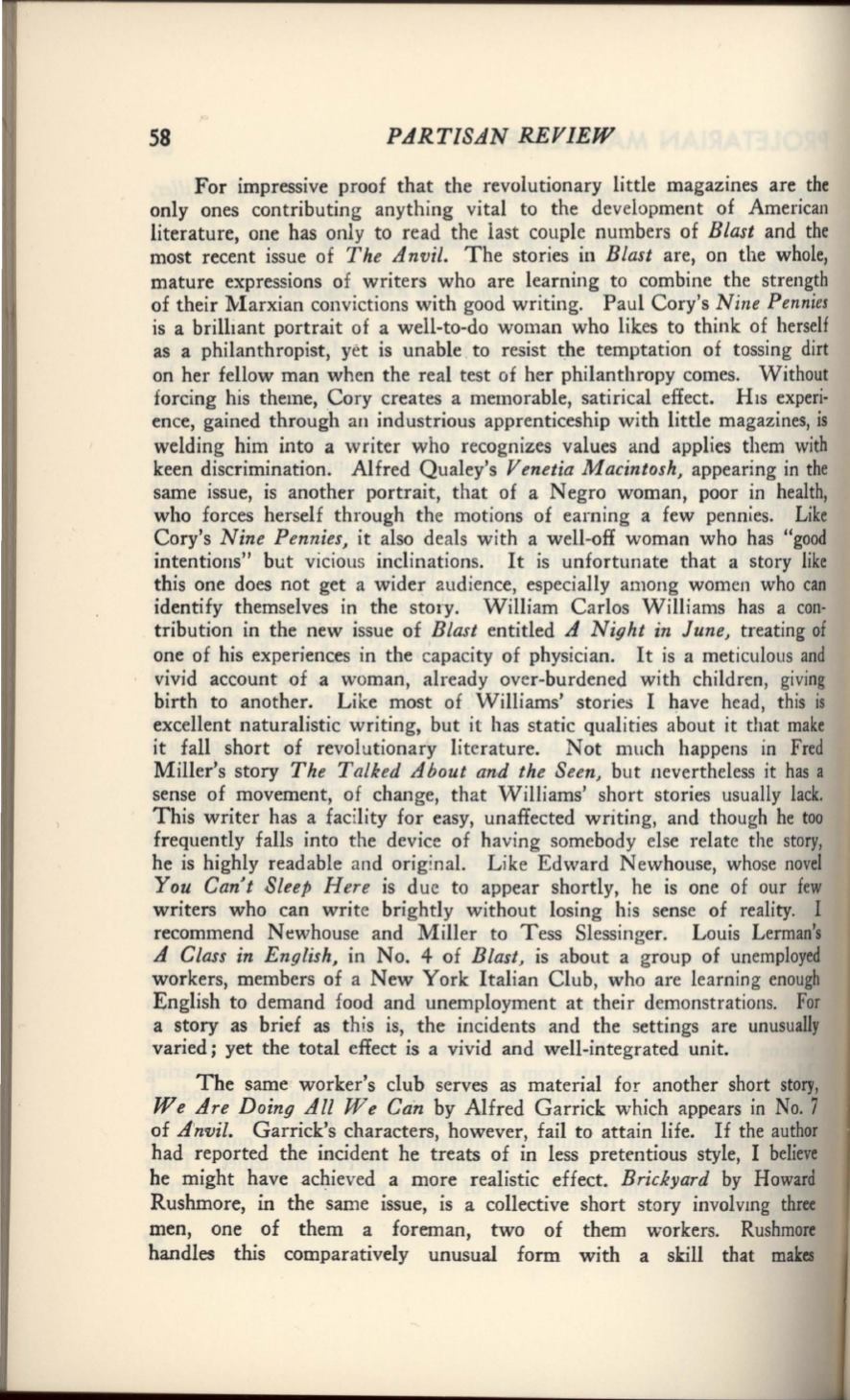
58
P.dRTISAN REVIEW
For impressive proof that the revolutionary little magazines are the
only ones contributing anything vital to the development of American
literature, one has only to read the last couple numbers of
Blast
and the
most recent issue of
The Anvil.
The stories in
Blast
are, on the whole,
mature expressions of writers who are learning to combine the strength
of their 1\-Iarxian convictions with good writing. Paul Cory's
Nine Pennies
is a brilliant portrait of a well-to-do woman who likes to think of herself
as a philanthropist, yet is unable to resist the temptation of tossing dirt
on her fellow man when the real test of her philanthropy comes. Without
forcing his theme, Cory creates a memorable, satirical effect. H1s experi·
ence, gained through an industrious apprenticeship with little magazines, is
welding him into a writer who recognizes values and applies them with
keen discrimination. Alfred Qualey's
Venetia Macintosh,
appearing in the
same issue, is another portrait, that of a Negro woman, poor in health,
who forces herself through the motions of earning a few pennies. Like
Cory's
Nine Pennies,
it also deals with a well-of£ woman who has "good
intentions" but vicious inclinations. It is unfortunate that a story like
this one does not get a wider audience, especially among women who can
identify themselves in the story. William Carlos Williams has a con–
tribution in the new issue of
Blast
entitled
A Night in June,
treating of
one of his experiences in the capacity of physician. It is a meticulous and
vivid account of a woman, already over-burdened with children, giving
birth to another. Like most of Williams' stories I have head, this is
excellent naturalistic writing, but it has static qualities about it that make
it fall short of revolutionary literature. Not much happens in Fred
Miller's story
The Talked About an·d the Seen,
but nevertheless it has a
sense of movement, of change, that Williams' short stories usually lack.
This writer has a facility for easy, unaffected writing, and though he too
frequently falls into the device of having somebody else relate the story,
he is highly readable and original. Like Edward Newhouse, whose novel
You Can't Sleep Here
is due to appear shortly, he is one of our few
writers who can write brightly without losing his sense of reality. I
recommend Newhouse and Miller to Tess Slessinger. Louis Lerman's
A Class in English,
in No. 4 of
Blast,
is about a group of unemployed
workers, members of a New York Italian Club, who are learning enough
English to demand food and unemployment at their demonstrations. For
a story as brief as this is, the incidents and the settings are unusually
varied; yet the total effect is a vivid and well-integrated unit.
The same worker's club serves as material for another short story,
We Are Doing All We Can
by Alfred Garrick which appears in No.7
of
A'nvil.
Garrick's characters, however, fail to attain life.
If
the author
had reported the incident he treats of in less pretentious style, I believe
he might have achieved a more realistic effect.
Brickyard
by Howard
Rushmore,
in
the same issue, is a collective short story involvmg three
men, one of them a foreman, two of them workers. Rushmore
handles this comparatively unusual form with a slcill that
makes


